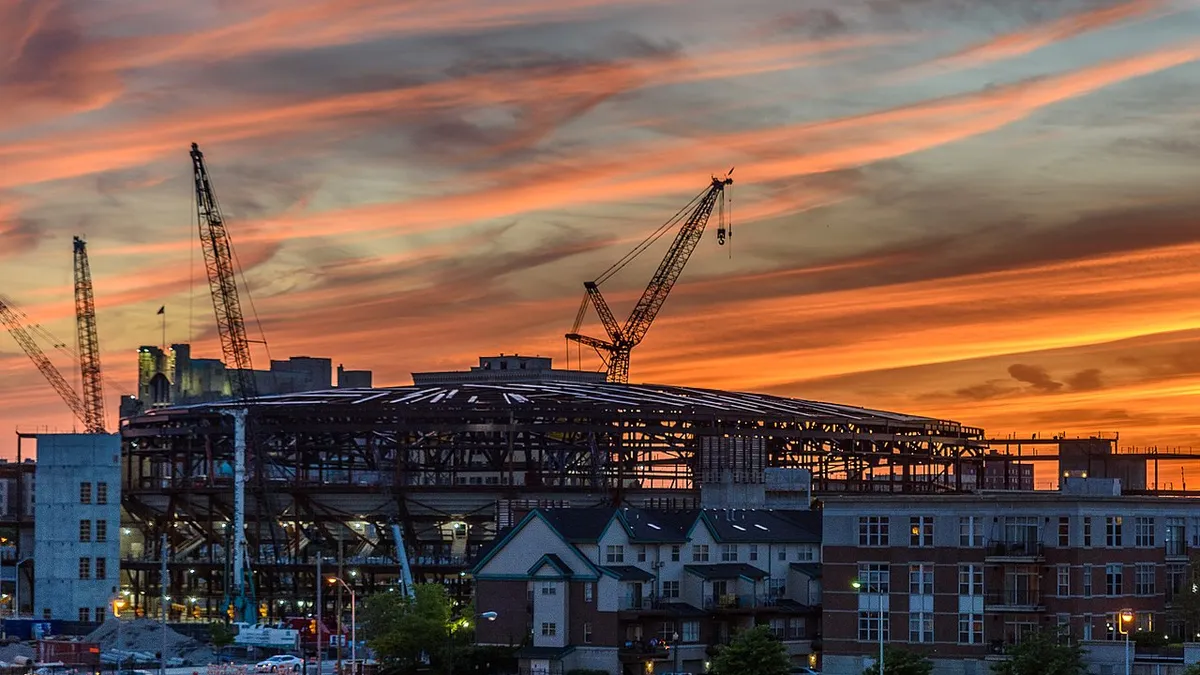Dive Brief:
- A new report from the Equipment Leasing and Finance Foundation, Vertical Market Outlook Series – Construction, said the near-term residential and commercial construction markets should continue to grow. In the report, ELFF highlighted the industry's record spending in 2017 and predicted a 5% industry growth in 2018, according to the Monitor.
- Citing other groups' analyses and reports, the foundation laid out a case for industry expansion, albeit at a less frenetic pace than in previous years, amid confidence among contractors about their ability to increase revenues. This is reflected in metrics such as the expected percentage of contractor loan defaults and an anticipated increase in profits from equipment sales and rentals.
- The foundation's report also put a spotlight on construction industry trends for the remainder of 2018, which include: more attention to issues of resiliency, driven by the destructive 2017 hurricane season and other natural disasters; the persistent labor shortage, which has threatened productivity and has sent contractors on a search for skilled workers; increased offsite construction; the role of automation and technology in the areas of productivity and safety; the use of building information modeling; what inroads artificial intelligence and big data will make; and the new policy regulations that will impact contractors.
Dive Insight:
In its report, the foundation put the spotlight on several issues that could potentially impact the construction industry. Two of those are the potential impact of the corporate tax rate and how President Donald Trump's tariffs on steel and aluminum will affect material prices.
The $1.5 trillion tax reform bill, passed at the end of last year, lowered the rate to 21% and set a pass-through deduction rate of 20%. While there has been much enthusiasm for the change across all sectors, and a lot of discussion about how this will enable construction companies to reinvest those tax savings back into their businesses, it's too early to determine if this is actually happening. Before the ink was dry on the legislation, however, some suggested raising the corporate rate to 23% in order to fund infrastructure programs.
It's not too early, though, to gauge the effect of the president's 25% tariff on steel and 10% tariff on aluminum. U.S. allies have fought back against the increased duties and have enacted their own tariffs on steel, aluminum and other U.S.-produced goods in response.













